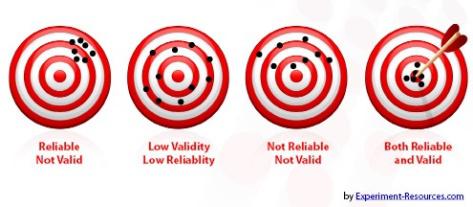
Some equate assessment with standardized tests while others see it as authentically woven into the routines of teaching and learning. Assessment can be a powerful driver of learning in that it tells students what is important to know and do. Whether learners are being asked to recall number properties or use design software, test scores can influence their learning priorities. In contrast broad-based assessment practices encourage motivation, engage learners, and build ownership of learning.
Assessment goes beyond testing and grading in that it serves as roadmap for improving teaching and strengthening learning. The quality indicators of assessment in this chart apply to both large scale and day to day classroom assessment. They come from the expertise of many including Lori Shepard, Linda Darling-Hammond, Doug Fisher, Eva Baker, James Pellegrino, Dylan Wiliam, Thomas Guskey, Carol Tomlinson, and more. (Apologies to any I’ve overlooked). For each idea there is an opportunity to think about how it applies to your daily practice. A few are included to get you started along with places to add your own thoughts.

| SYMBIOTIC: Assessment supports teaching and instruction aligns with assessment. It emphasizes improvement and is student focused. |
| Purposefully Planned: Reflects and supports curriculum. Meets the requirements of an array of learners. |
Meaningful assessment occurs throughout teaching and learning |
| Integrated With Instruction: Teachers and learners continuously take the pulse of learning. |
Occurs minute by minute and day to day |
| Responsive: Focuses on improvement to teaching and student growth. Monitors progress and informs personalized responses. |
Builds on prior learning |
| Multiple Measures: A variety of methods are used to assess a range of learning outcomes. |
Includes traditional, alternative, portfolios, and self-assessment |
| Discerns between measures that involve numerical expression of learning and assessment that require interpretation. |
|
| Multiple levels: Assesses varying depths and degrees of learning. |
|
 |
| VISIBLE: Assessment is transparent to all constituents. |
| Learning targets are known and visible. Exemplars are evident. |
Units and lessons include explanations of learning targets and assessments |
| Clarity: Assessment methods and strategies are understood. |
|
| Specifications for judging performance are clear. Assessment purposes are evident (Informative, diagnostic, summative). |
|
| Feedback emphasizes strength of performance and gaps to be addressed through meaningful and useful guidance. |
Students receive feed-back, feed-up, and feed-forward add hyperlink |
| Consequences of the assessment are considered: High-stakes (promotion, final grade) or low stakes (monitoring, formative). |
|
| Communicated to a range of constituents. |
|
 |
| TECHNICALLY SOUND: Valid, Reliable, Fair, and Balanced. |
| Valid: Assessments measure the intended targets and inferences made from them are accurate. |
Teachers use PLCs to analyze data and develop responses |
| Reliable: Consistent across groups, settings, and forms. Considers possible errors in scoring when using assessment results. |
|
| Fair: Free from bias, stereotype, and offense. Equitable for all types of learners. |
|
| Samples: Adequate scope of learning that reflects students’ knowledge, understanding, and skills. |
|
| Aligned in a comprehensive reporting and grading system. |
Displays a range of targets and outcomes from content mastery to 21st century applications |
 |




